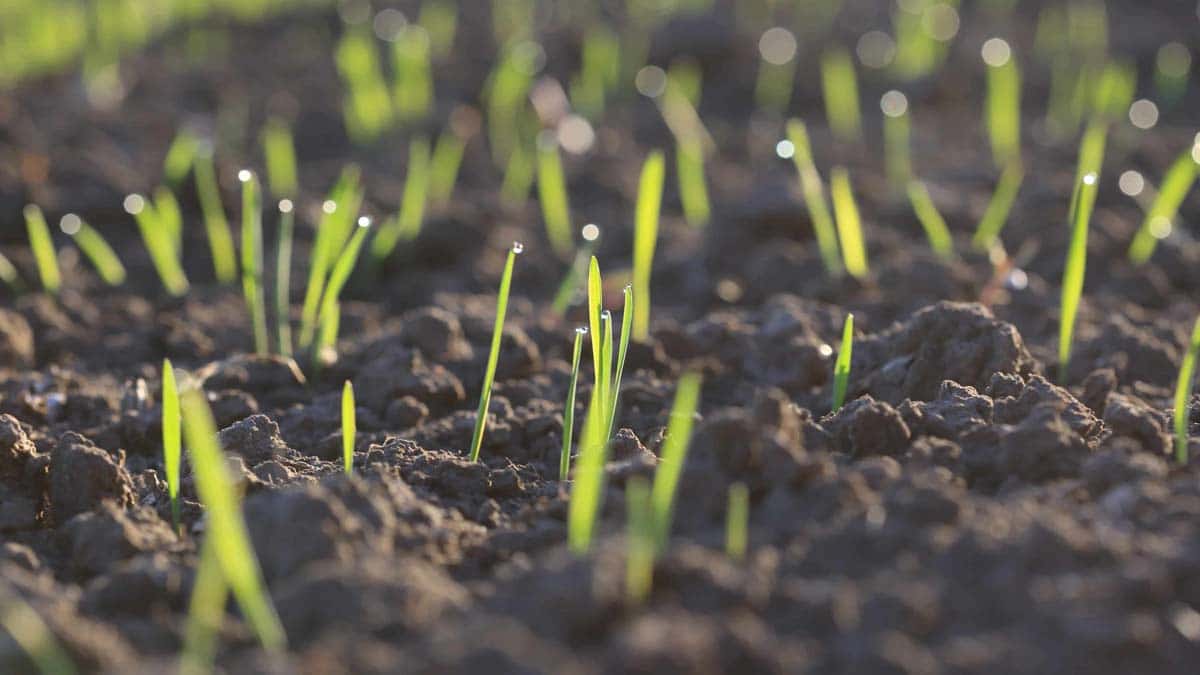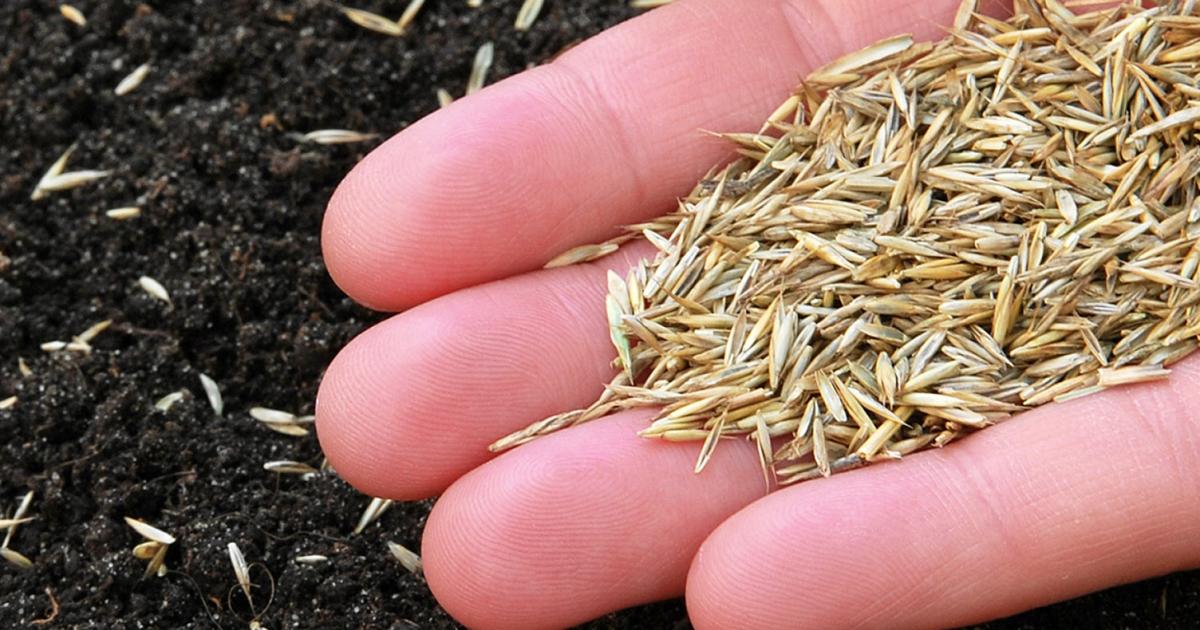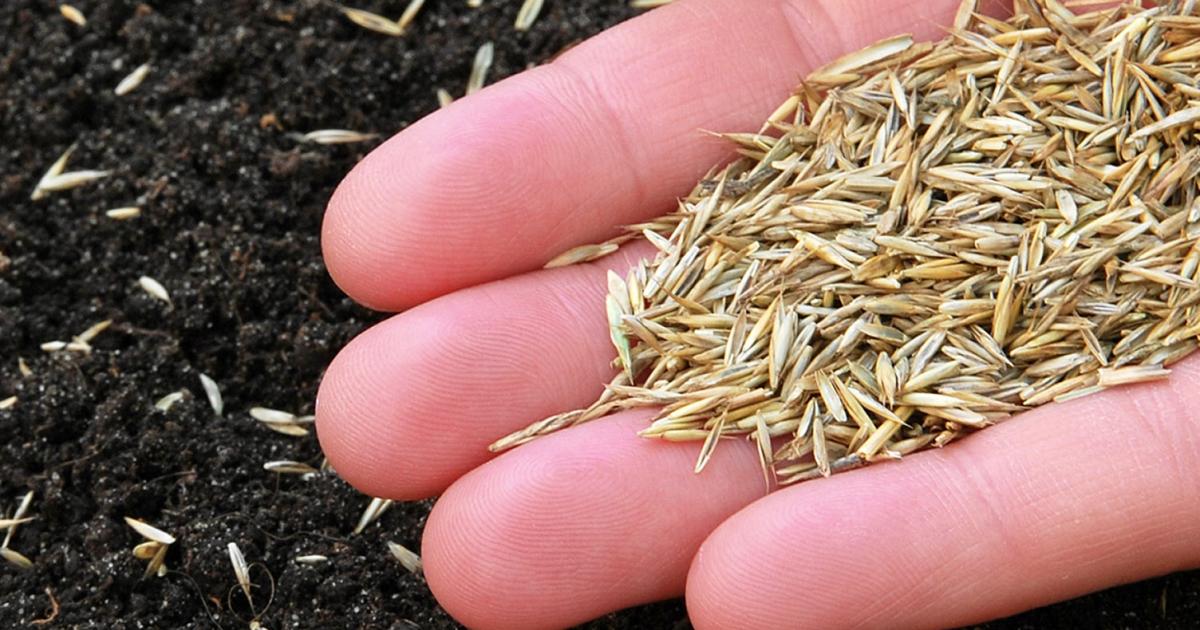The Top Strategies for Timing Your Grass Seed Sowing in the UK: A lush, green lawn is a source of pride for any homeowner, but achieving that perfect emerald carpet requires more than just throwing down some seed and hoping for the best.
Understanding the nuances of the UK’s climate and the growth cycles of different grass types is crucial for successful lawn establishment. Timing is everything when it comes to sowing grass seed, and getting it right can make the difference between a thriving lawn and a patchy, disappointing one.
This guide will delve into the best times to sow grass seed in the UK, taking into account the unique challenges and opportunities presented by the country’s temperate climate. We’ll explore the optimal sowing windows for different grass types, the benefits and drawbacks of spring and autumn sowing, and the key factors that can influence your decision.
Whether you’re a seasoned gardener or a novice lawn enthusiast, this comprehensive guide will provide you with the knowledge and tools to ensure your next lawn project is a resounding success.
Understanding UK Climate and Grass Growth: The Top Strategies For Timing Your Grass Seed Sowing In The UK
The UK’s temperate climate plays a significant role in determining the optimal timing for sowing grass seed. Understanding the nuances of this climate and its impact on grass growth is crucial for achieving successful lawn establishment.The UK experiences distinct seasonal variations, with relatively mild winters and warm summers.
These seasonal changes directly influence grass growth cycles, creating specific windows for successful seed sowing.
Understanding the optimal times for sowing grass seed in the UK is crucial for achieving a lush, healthy lawn. For best results, it’s important to consider the prevailing weather conditions and the specific type of grass seed you’re using.
To learn more about the ideal planting windows for different seasons and grass varieties, consult our comprehensive guide: When to Sow Grass Seed in the UK: The Best Times for Planting. This knowledge will equip you with the essential information to implement the top strategies for timing your grass seed sowing in the UK, maximizing your chances of success.
Seasonal Variations and Grass Growth
The timing of seed sowing is influenced by the prevailing weather conditions throughout the year. The UK’s climate is characterized by its temperate nature, meaning it experiences moderate temperatures and rainfall throughout the year. However, seasonal variations in temperature, rainfall, and sunlight levels significantly impact grass growth.
- Spring: As temperatures rise and daylight hours increase, grass growth accelerates. Spring is generally considered the ideal time for sowing grass seed in the UK. The warmer temperatures and increased sunlight promote germination and rapid growth, leading to a healthy and established lawn.
- Summer: Summer temperatures can be challenging for newly sown grass, particularly during periods of drought. The high temperatures and reduced rainfall can lead to dehydration and slow growth. While it is possible to sow grass seed in summer, it requires careful watering and maintenance to ensure successful establishment.
- Autumn: Autumn is another suitable time for sowing grass seed, especially in milder regions. The cooler temperatures and increased rainfall provide ideal conditions for germination and root development. However, it is essential to sow before the ground becomes too cold and wet.
- Winter: Winter is generally not an ideal time for sowing grass seed in the UK. The cold temperatures and reduced sunlight can hinder germination and growth. However, in mild winters, it may be possible to sow seed in protected areas.
Key Factors Influencing Grass Growth
Several key factors influence grass growth, including temperature, rainfall, and sunlight.
- Temperature: Grass requires a specific temperature range for optimal growth. The ideal temperature for germination and establishment is between 15°C and 25°C.
- Rainfall: Adequate rainfall is essential for grass seed germination and growth. Newly sown grass requires consistent moisture to thrive. However, excessive rainfall can lead to waterlogging and damage to the seedlings.
- Sunlight: Grass requires sunlight for photosynthesis, the process by which it produces energy for growth. Most grass varieties require at least six hours of direct sunlight per day.
Ideal Timing for Grass Seed Sowing in the UK
Knowing the ideal time to sow grass seed is crucial for successful establishment and a healthy lawn. The UK’s climate, with its distinct seasons, plays a significant role in determining the best sowing windows for different grass types.
Optimal Sowing Windows for Different Grass Types
The optimal sowing windows for different grass types vary depending on their growth habits and the prevailing weather conditions.
- Cool-Season Grasses:These grasses thrive in cooler temperatures and are best sown in the early spring (March-April)or late summer/early autumn (August-September). This allows them to establish roots before the hot summer months or before the winter frost sets in.
- Warm-Season Grasses:These grasses prefer warmer temperatures and are best sown in late spring (May-June). This ensures that the soil has warmed up sufficiently and the seedlings have ample time to establish before the cooler autumn months.
Best Times for Sowing Cool-Season and Warm-Season Grasses
The ideal sowing times for cool-season and warm-season grasses differ due to their contrasting growth habits.
- Cool-Season Grasses:
- Spring Sowing:This allows for optimal germination and establishment as the soil warms up and the days lengthen. The cooler temperatures of spring also help prevent the seedlings from drying out too quickly.
- Autumn Sowing:This provides a longer growing season for the seedlings to establish roots before winter. The cooler temperatures of autumn also reduce the risk of disease and pest problems.
- Warm-Season Grasses:
- Late Spring Sowing:This allows for optimal germination and establishment as the soil has warmed up sufficiently and the days are longer. The warmer temperatures also help promote faster growth and development.
Sowing Month Ranges Based on Region and Grass Type
The specific month ranges for sowing grass seed can vary slightly depending on the region and the type of grass being sown.
Just like there’s a perfect time to sow your grass seed in the UK, there’s also a right way to use bay leaf substitutes in your cooking. If you find yourself without this essential ingredient, The Essential Guide to Using Bay Leaf Substitutes Effectively will guide you through the best options.
Once you’ve mastered the art of substitutes, you can return to your lawn, knowing the timing of your grass seed sowing will determine the success of your green haven.
- Southern England:
- Cool-Season Grasses:March-April and August-September.
- Warm-Season Grasses:May-June.
- Northern England:
- Cool-Season Grasses:April-May and August-September.
- Warm-Season Grasses:May-June.
- Scotland:
- Cool-Season Grasses:May-June and August-September.
- Warm-Season Grasses:May-June.
- Wales:
- Cool-Season Grasses:March-April and August-September.
- Warm-Season Grasses:May-June.
Spring Sowing Strategies
Spring sowing offers several benefits, including warmer soil temperatures, increased germination rates, and a longer growing season. Ideal conditions for spring sowing include soil temperatures consistently above 5°C (41°F) and adequate moisture levels.
Soil Preparation for Spring Sowing
Thorough soil preparation is crucial for successful spring sowing. It ensures proper drainage, aeration, and nutrient availability for healthy grass growth. The following steps are essential for preparing the soil:
- Remove Existing Vegetation:Clear the area of any existing weeds, grasses, or debris. This can be done manually or with a rotary tiller.
- Test Soil pH:A soil test will determine the pH level and nutrient content of the soil. This information helps identify any deficiencies and adjust soil pH if necessary.
- Amend Soil:Based on the soil test results, amend the soil with appropriate materials, such as compost, manure, or lime, to improve its structure, fertility, and pH.
- Till the Soil:Use a rotary tiller to break up compacted soil, remove any remaining debris, and incorporate amendments evenly.
- Rake and Level:After tilling, rake the soil to remove any large clumps and level the surface for uniform seed distribution.
Spring Sowing Steps
Following these steps ensures a successful spring sowing:
- Choose the Right Seed:Select a grass seed blend suitable for your climate, soil type, and desired lawn characteristics. Consider factors like shade tolerance, wear resistance, and desired growth height.
- Sow the Seed:Spread the seed evenly over the prepared soil using a seed spreader or by hand. Ensure a consistent seed distribution to avoid patchy growth.
- Rake the Seed In:Lightly rake the seed into the soil to ensure good contact and prevent wind or birds from carrying it away.
- Water Thoroughly:After sowing, water the soil thoroughly to promote seed germination. Aim for a gentle, soaking watering to ensure adequate moisture without dislodging the seed.
- Maintain Moisture:Keep the soil consistently moist throughout the germination period. This may require regular watering, especially during dry spells.
- Fertilize:Once the grass seedlings emerge, apply a balanced fertilizer to encourage healthy growth. Follow the manufacturer’s instructions for application rates and timing.
- Mow Regularly:Once the grass reaches a height of 2-3 inches, mow it regularly, leaving the clippings on the lawn to provide natural fertilizer.
Autumn Sowing Strategies

Autumn sowing is a popular choice for establishing a healthy lawn in the UK, offering several advantages over spring sowing. The cooler temperatures and increased rainfall during autumn provide ideal conditions for seed germination and root development, leading to a stronger and more resilient lawn.
Soil Preparation and Aeration Before Autumn Sowing
Preparing the soil before sowing is crucial for successful germination and root establishment. This involves removing existing vegetation, removing debris, and aerating the soil to improve drainage and allow for better root penetration.
- Removing Existing Vegetation:Existing grass, weeds, or other vegetation should be removed to prevent competition for nutrients and sunlight. This can be achieved through manual removal, using a weed killer, or by applying a thick layer of cardboard or black plastic to smother the existing vegetation.
- Removing Debris:Remove any debris, such as rocks, sticks, or leaves, from the soil surface. This will ensure that the seed has good contact with the soil and can germinate properly.
- Aeration:Aerating the soil is important for improving drainage and allowing for better root penetration. This can be achieved by using a garden fork, a hollow tine aerator, or a spiked roller.
A Detailed Guide for Autumn Sowing
Autumn sowing typically takes place between late August and mid-October, depending on the specific climate and soil conditions. Here’s a step-by-step guide for successful autumn sowing:
- Choose the Right Seed:Select a grass seed mix specifically designed for autumn sowing. This will ensure that the seed is adapted to the cooler temperatures and shorter days.
- Prepare the Soil:After removing existing vegetation and debris, rake the soil to create a fine tilth. This will ensure good seed-to-soil contact and promote even germination.
- Spread the Seed:Use a spreader to distribute the seed evenly across the lawn area. It’s essential to follow the manufacturer’s recommendations for the seeding rate.
- Rake the Seed In:Gently rake the seed into the soil, ensuring that it is covered with a thin layer of soil. This will protect the seed from birds and encourage germination.
- Water Thoroughly:Water the lawn thoroughly after sowing to ensure that the seed has adequate moisture for germination.
- Maintain Moisture:Continue to water the lawn regularly during the establishment period, ensuring that the soil remains consistently moist but not waterlogged.
Factors Influencing Sowing Timing

While understanding the ideal seasons for grass seed sowing in the UK is crucial, several factors can further influence the optimal timing for your specific situation. These factors, including soil type, existing lawn conditions, and weather forecasts, can significantly impact the success of your grass seed sowing efforts.
Soil Type
The type of soil you have plays a significant role in determining the best time to sow grass seed. Different soil types have varying drainage properties, affecting how quickly the seed germinates and how well the roots establish.
- Clay Soil:Clay soils tend to be heavy and retain moisture, making them prone to waterlogging. Sowing in spring, when the soil has warmed up and the risk of frost is minimal, is generally recommended. This allows the seed to germinate and establish before the colder months arrive.
- Sandy Soil:Sandy soils are lighter and drain quickly, often leading to faster drying. Sowing in autumn, when the soil is still warm but the weather is cooler and wetter, is often ideal for sandy soils. This provides a more consistent moisture level for germination and root development.
- Loam Soil:Loam soils are considered the most desirable for grass seed sowing due to their good drainage and moisture retention. These soils offer flexibility, allowing for sowing in both spring and autumn, depending on the specific weather conditions.
Existing Lawn Conditions
The condition of your existing lawn can also influence the best time to sow grass seed. If you are dealing with a patchy or damaged lawn, autumn sowing is generally recommended.
- Patchy or Damaged Lawns:Autumn sowing allows the new grass to establish before the harsh winter conditions arrive. This gives the seedlings a better chance of survival and helps to fill in the gaps in your existing lawn.
- Healthy Lawns:For healthy lawns, spring sowing can be a good option. This allows the new grass to grow vigorously during the warmer months, leading to a lush and healthy lawn.
Weather Forecasts
Weather forecasts are essential for determining the optimal sowing time. Ideally, you want to sow grass seed when the soil temperature is consistently above 10°C (50°F) and there is sufficient moisture for germination.
- Soil Temperature:Use a soil thermometer to check the soil temperature before sowing. If the temperature is below 10°C, it is best to wait until it warms up.
- Moisture Levels:Avoid sowing during periods of drought or heavy rain. Aim for consistent moisture levels, ensuring the soil is not too wet or too dry.
- Frost Risk:If there is a risk of frost, it is best to wait until the frost has passed before sowing. Frost can damage newly germinated seedlings.
Post-Sowing Care and Maintenance
After sowing your grass seed, proper care and maintenance are crucial for successful germination and establishment of a healthy lawn. Consistent attention to watering, mowing, fertilization, and weed and pest control will ensure your new lawn thrives.
Watering
Adequate watering is essential for seed germination and root development. Newly sown grass seed requires consistent moisture to sprout and establish.
- Water deeply and frequently, aiming for a consistent moisture level in the top few inches of soil.
- Avoid overwatering, as it can lead to fungal diseases and root rot.
- Use a sprinkler or watering can to gently water the seedbed, avoiding dislodging the seeds.
- Consider using a moisture meter to monitor soil moisture levels.
- During dry periods, increase watering frequency to ensure adequate moisture.
Mowing, The Top Strategies for Timing Your Grass Seed Sowing in the UK
Regular mowing encourages healthy growth and prevents the grass from becoming too tall and weak.
- Wait until the grass is at least 3 inches tall before mowing for the first time.
- Mow high, removing only the top third of the grass blades.
- Use a sharp mower blade to ensure a clean cut and prevent damage to the grass.
- Avoid mowing when the grass is wet, as this can cause clumping and damage.
- Consider using a mulching mower, which finely chops grass clippings and returns them to the lawn as a natural fertilizer.
Fertilization
Fertilizing provides essential nutrients for healthy grass growth.
- Apply a starter fertilizer specifically formulated for new lawns shortly after sowing.
- Avoid over-fertilizing, as it can damage the delicate roots of young grass.
- Follow the instructions on the fertilizer label for application rates and frequency.
- Consider using organic fertilizers, which are slow-release and beneficial for soil health.
Weed and Pest Control
Weed and pest control is essential for preventing competition for nutrients and water.
- Hand-pull weeds as soon as they appear, especially during the early stages of lawn establishment.
- Apply a pre-emergent herbicide to prevent weed seeds from germinating.
- Use a selective herbicide to control specific weeds that have already emerged.
- Monitor for pests like grubs and chinch bugs and take appropriate control measures if necessary.
Final Summary
Sowing grass seed in the UK is a rewarding endeavor, but it’s crucial to approach it with a strategic mindset. By understanding the intricacies of the UK’s climate, the growth habits of different grass types, and the best practices for sowing and post-sowing care, you can create a lush, healthy lawn that will be the envy of your neighborhood.
Remember, patience is key, and with careful planning and consistent effort, you’ll be enjoying the fruits of your labor for years to come.
Query Resolution
What are the best months to sow grass seed in the UK?
The ideal sowing times for grass seed in the UK are generally spring (March-May) and autumn (September-October). However, specific timing will depend on your region, grass type, and weather conditions.
How long does it take for grass seed to germinate?
Germination time for grass seed can vary depending on the type of seed, soil temperature, and weather conditions. Generally, it takes about 7-14 days for grass seed to sprout, but it can take up to 3 weeks in colder weather.
What are the signs of a healthy lawn?
A healthy lawn will have a deep green color, a uniform texture, and be free of weeds and pests. The grass should be thick enough to prevent weeds from growing and should be able to withstand foot traffic without damage.
